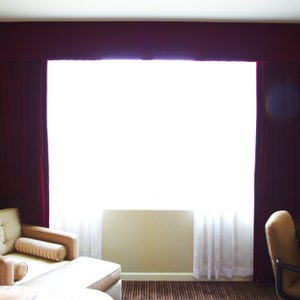
Walls that are beaten up, damaged or dingy make a house look neglected and sad. You can fix up your unhappy walls without spending a lot of money. Using frugal tips and alternative materials can keep both your walls and your bank account looking fine.
Filling Dents
If you live in a home with lively dogs or rambunctious teenagers, you may have a dent or two in your walls. These are easily fixed with spackle. Smear the spackle into and over the dent using a wide putty knife. Make it as smooth as possible and protruding just slightly from the plane of the wall. Allow it to dry thoroughly. Sand the spackle smooth, and apply another coat, this time flush with the plane of the wall. Allow it to dry thoroughly, and give it a light finish sand. It is now ready for painting and, after painting, the dent will be gone.
Fixing Small Holes
Holes in walls that are left by nails and picture hooks are easily fixed. You can fill them using standard wall spackle or hole filller that can be bought at any home improvement store in small containers. Push whatever substance you are using into the hole, and fill it thoroughly; leave a small nub protruding. Allow it to dry, and then sand it lightly. This single step should be sufficient for small holes. If it doesn't look good, put another light coat over it, let it dry thoroughly and give it a light sanding.
Fixing Medium Holes
The best method for fixing large holes depends on just how large they are. You can fix holes that are softball size or smaller with a small piece of drywall. Cut the piece oversize, then cut away the back paper and center around the edges, leaving only the front paper. This will leave you with a piece of drywall that will fit into the hole, attached to a paper that will lay over the face of the wall and hold the patch in place. Spread spackle around the hole, set the patch in place and cover it with more spackle.
Fixing Large Holes
If you have large holes in your walls, cut around them and extend the holes to the nearest studs. Cut an even rectangle that extends from one stud to the next, and fill the hole with a piece of drywall that is screwed to the two studs. Tape and spackle around the edges of the drywall as you would with new construction.
References
Writer Bio
Jagg Xaxx has been writing since 1983. His primary areas of writing include surrealism, Buddhist iconography and environmental issues. Xaxx worked as a cabinetmaker for 12 years, as well as building and renovating several houses. Xaxx holds a Doctor of Philosophy in art history from the University of Manchester in the U.K.

